Sicilian-born Stephen Russo (b. 1969) is one of Italy’s leading fashion designers (he specializes in eyewear, has worked for Celine, Prada, Miu Miu, and is currently a designer for Louis Vuitton), but he is also an artist who has long been pursuing research inspired by science, multisensoriality, and quantum physics. His works are currently on display in Pietrasanta, at The Project Space, for the exhibition The Space in Between: Evolution of Consciousness. We caught up with Russo and talk with him about his works. The interview is by Federico Giannini.
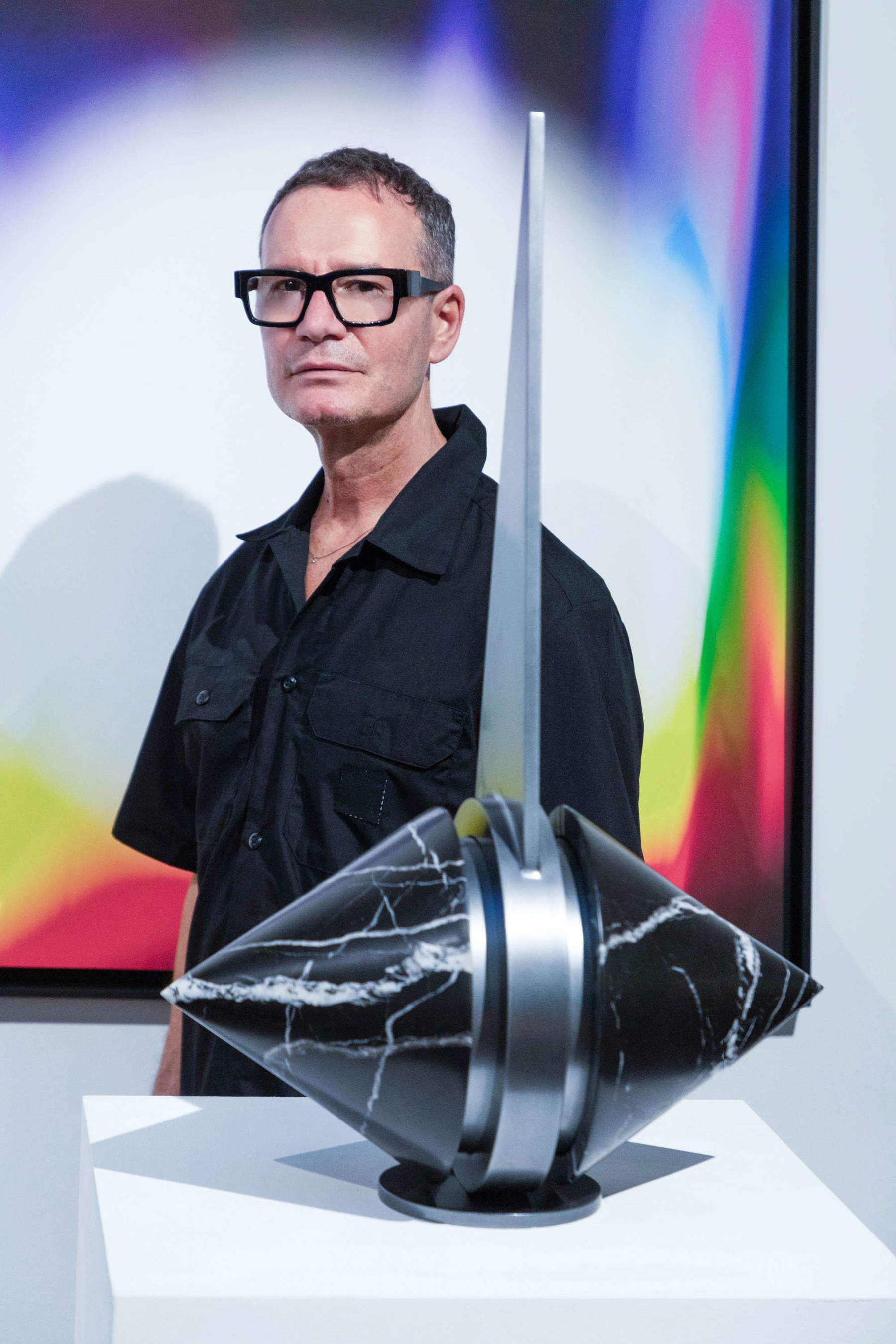
FG. Tell us about your work in the exhibition Space in Between.
SR. The idea of this in-between space comes from the desire to create a neutral space where energies can interact freely. The works on display deal mainly with balancing. The first, titled like the exhibition, Space in Between, represents the point of balance and equilibrium between opposites. The second work is called Harmony Union and works on the connection between all things: it gives us the opportunity, through connecting with these sculptures (which are not sculptures for me, but perceptual tools), to prepare for the third phase, Power Connection. Power Connection is when the tips of the works, which initially work toward the inside of us, move outward, and the beam of light connects everything around us. The bottom line is that there is a subtle relationship between us and the energies around us. I have always tried to create a balance point between the objects we wear and the objects we experience, such as sculptures or photographs, and our energy, because everything around us is connected to us and to the whole universe. It is important to work on this energetic union with the right frequency to modulate the energies. Then there is another part of the exhibition, Dancing Photons, which presents photographs made with a spectrum warping technique, ranging from infrared to ultraviolet, modulated to 432 Hertz sounds, to make them remind and inspire us in relation to our emotions, our feelings, and our daily living. The third section, Mirror of Perception, includes three mirrors: a red one, representing the world around us; a green one, symbolizing our centering in presence; and finally the purple one, representing spirituality, which is amplified. To achieve greater spiritual awareness, it is necessary to step into the reflection of the mirror and recognize our invisible part. The last phase of Space in Between is the Bazooka Light, conceived several years earlier, to create an instrument of terror and fear and turn it toward light by working on the power of the photon, and then how our cells are nourished through light and sound, and this is shown to us by the 1960s studies of Fritz-Albert Popp. The exhibition is meant to be an inspiration, a transformation of consciousness, as I feel that the most important thing today is an awakening, but an awakening of consciousness more than anything else.
Why do you call your works perceptual instruments?
My sculptures, more than sculptures, are perceptual instruments in that for me today the object itself has an energetic value. And if this object, which in this case becomes an instrument and for some becomes a sculpture, it has the power to be perceived, to be energetically felt, because it goes in line with one’s frequencies, vibrations flow: so it is important to surround oneself with resonant objects in order to have a harmonious existence.
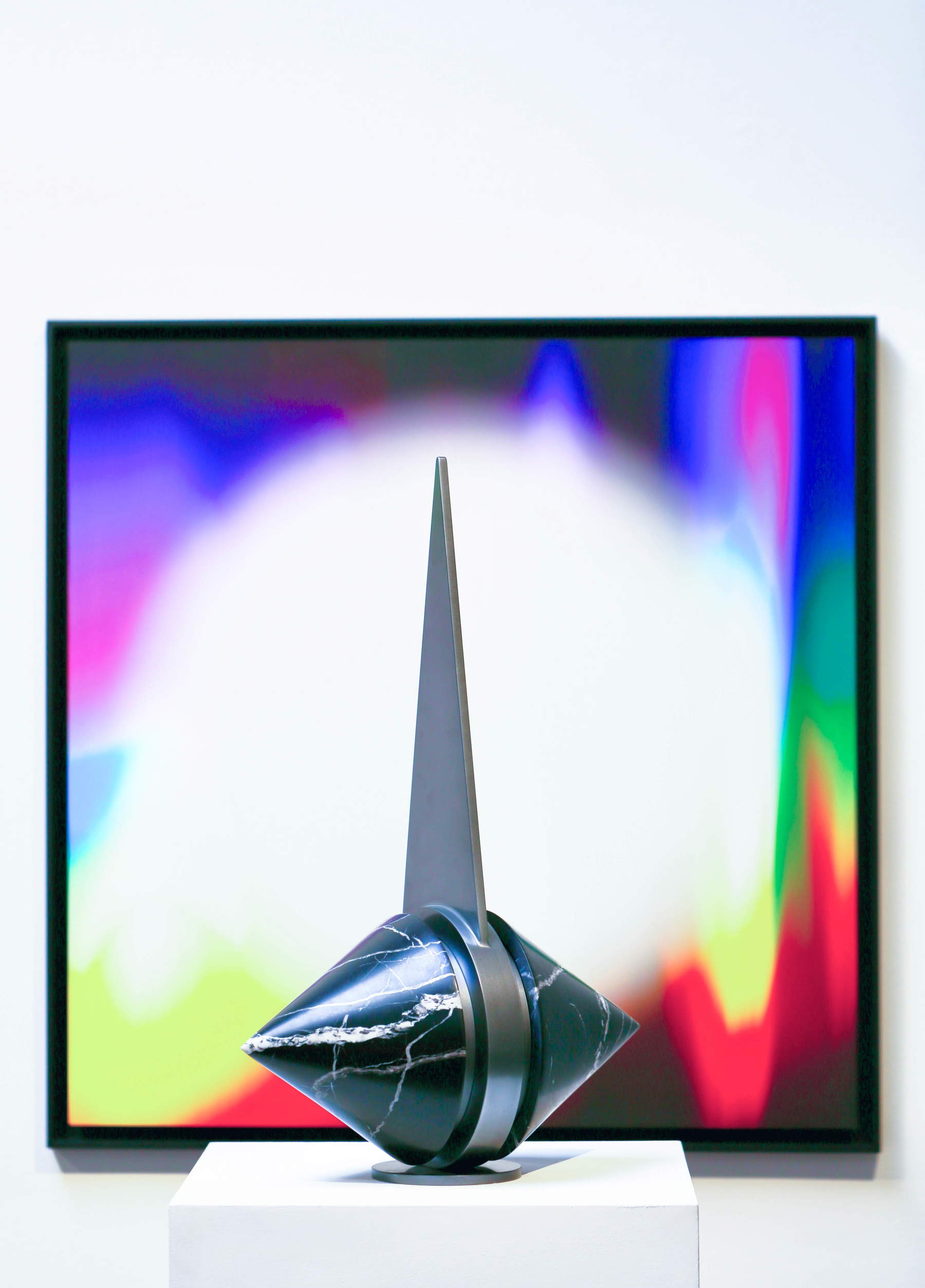
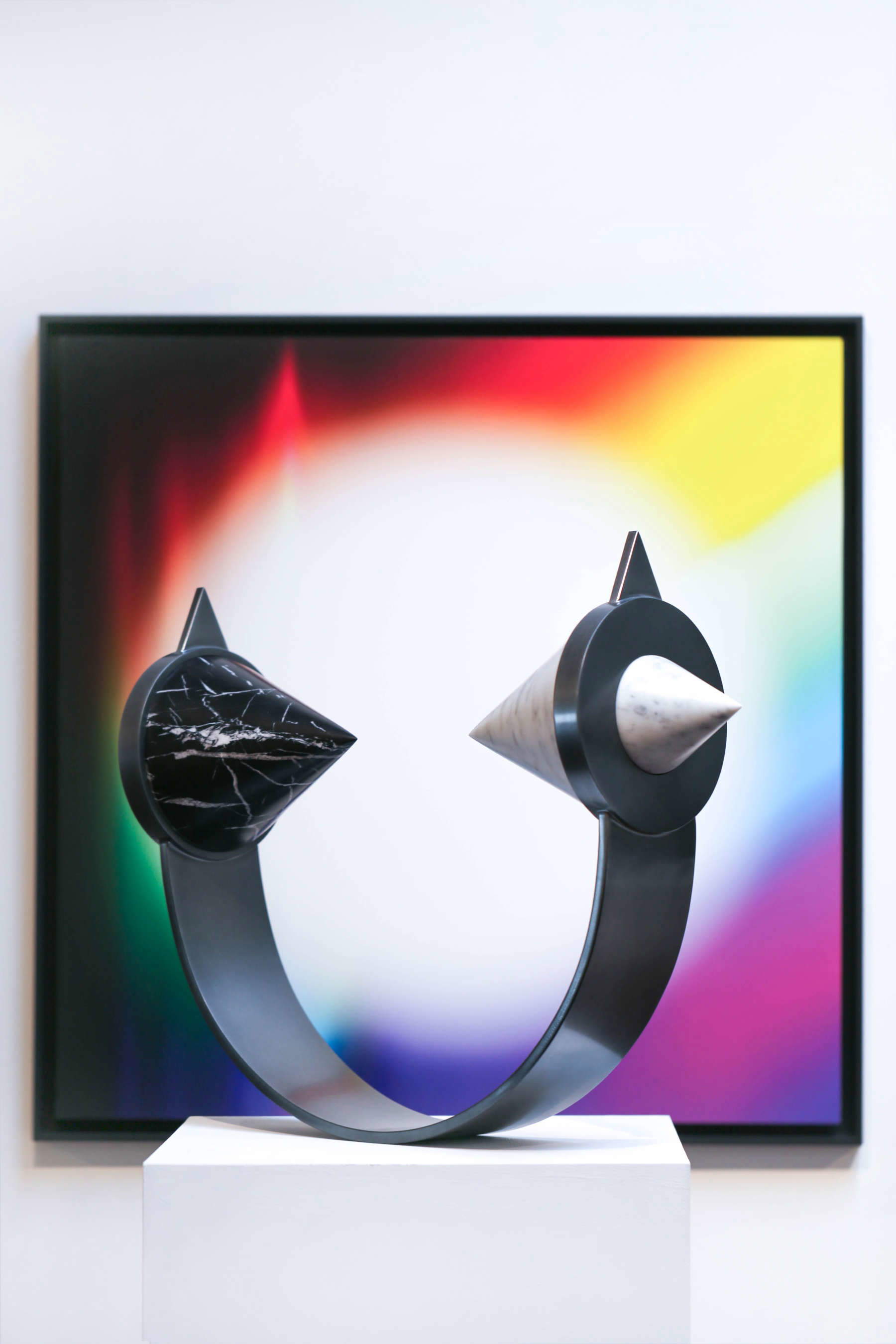
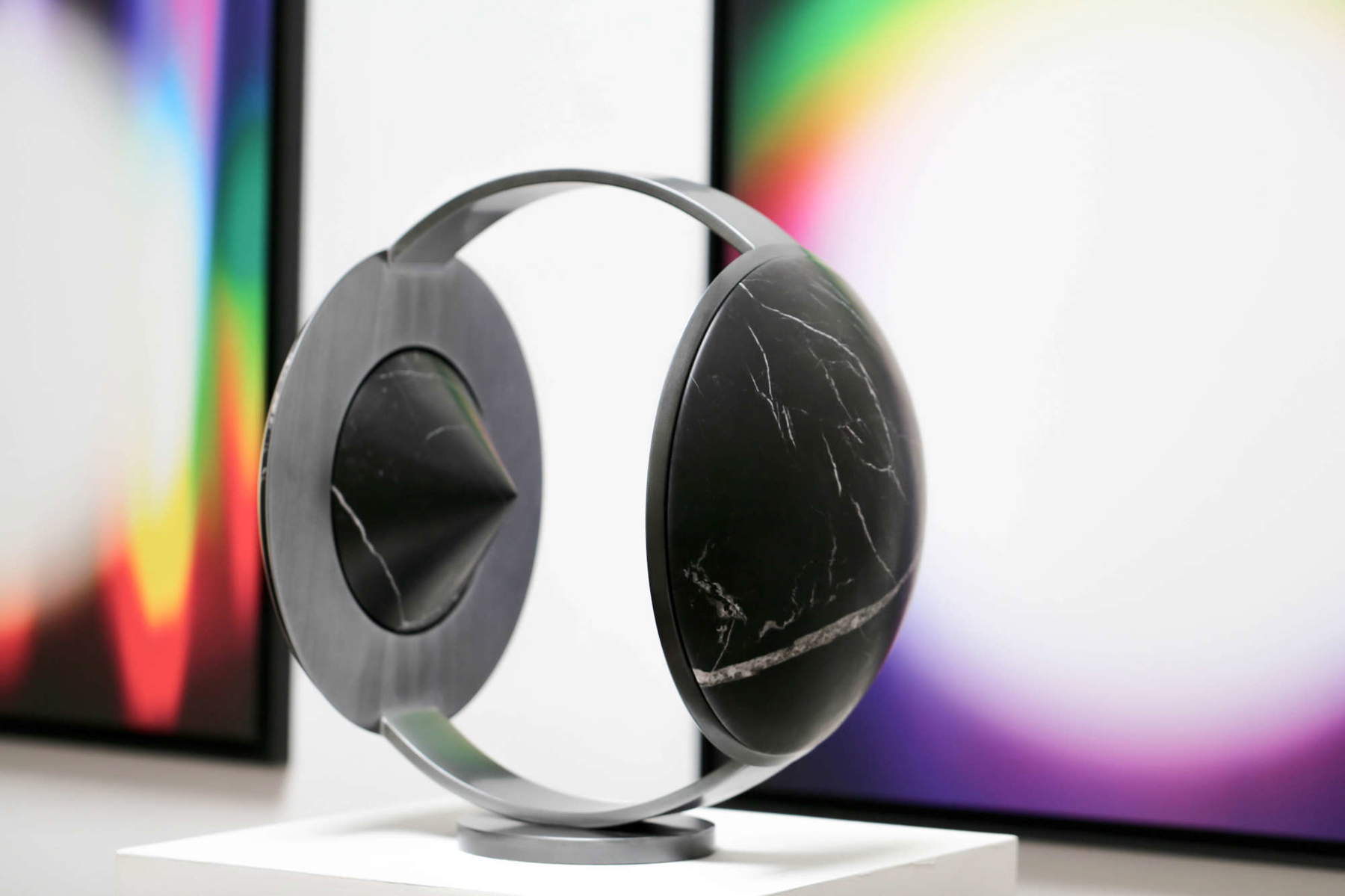
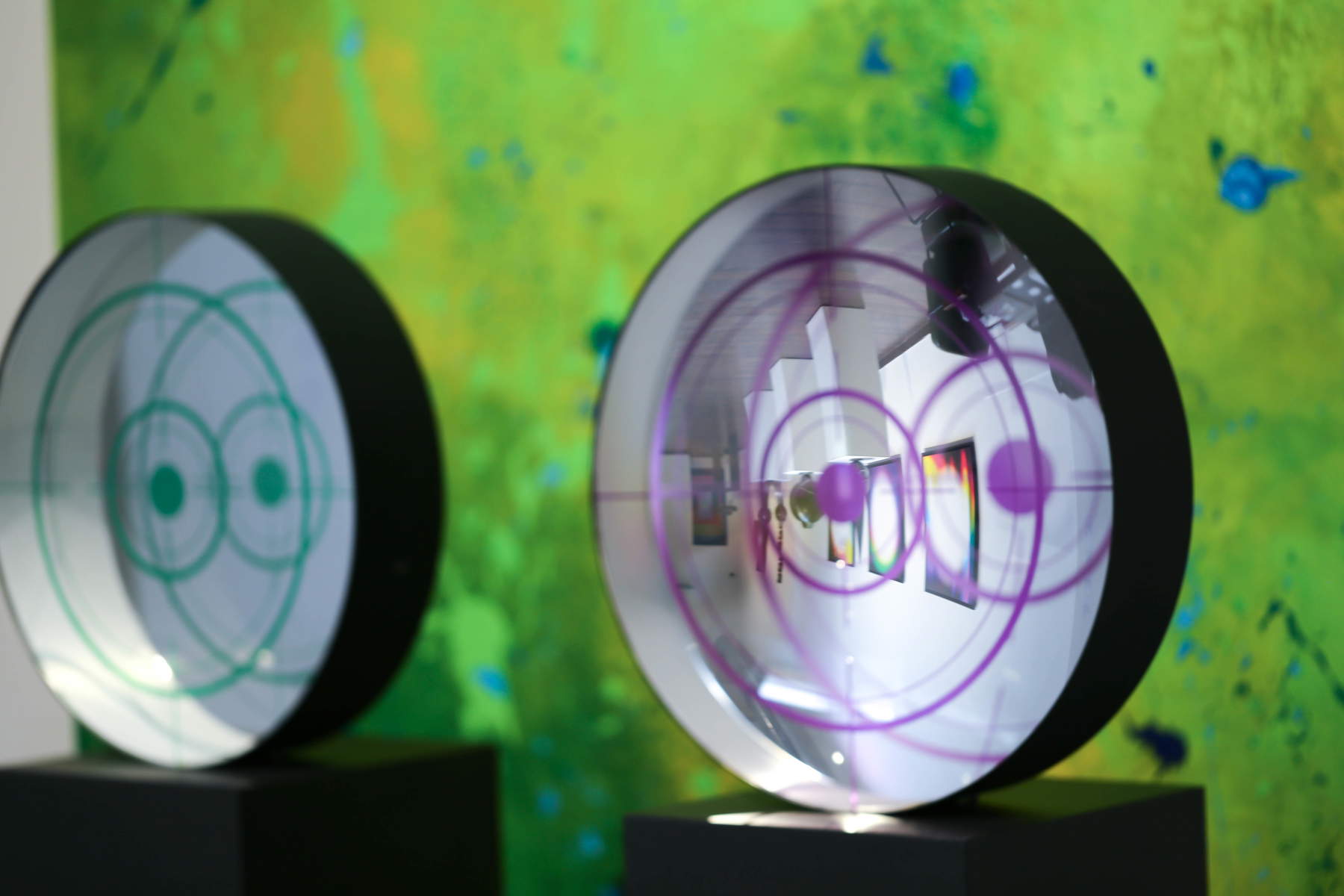
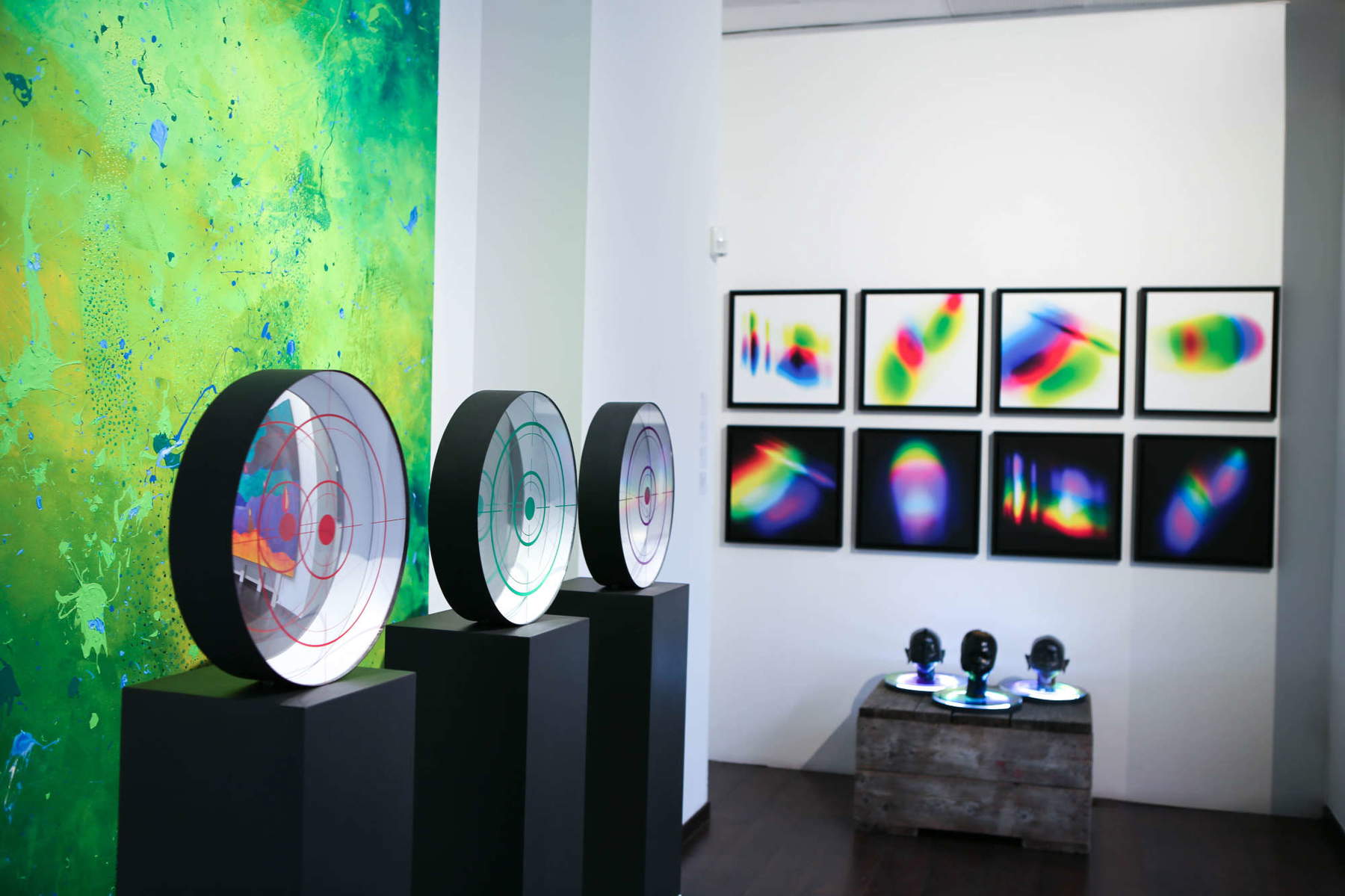
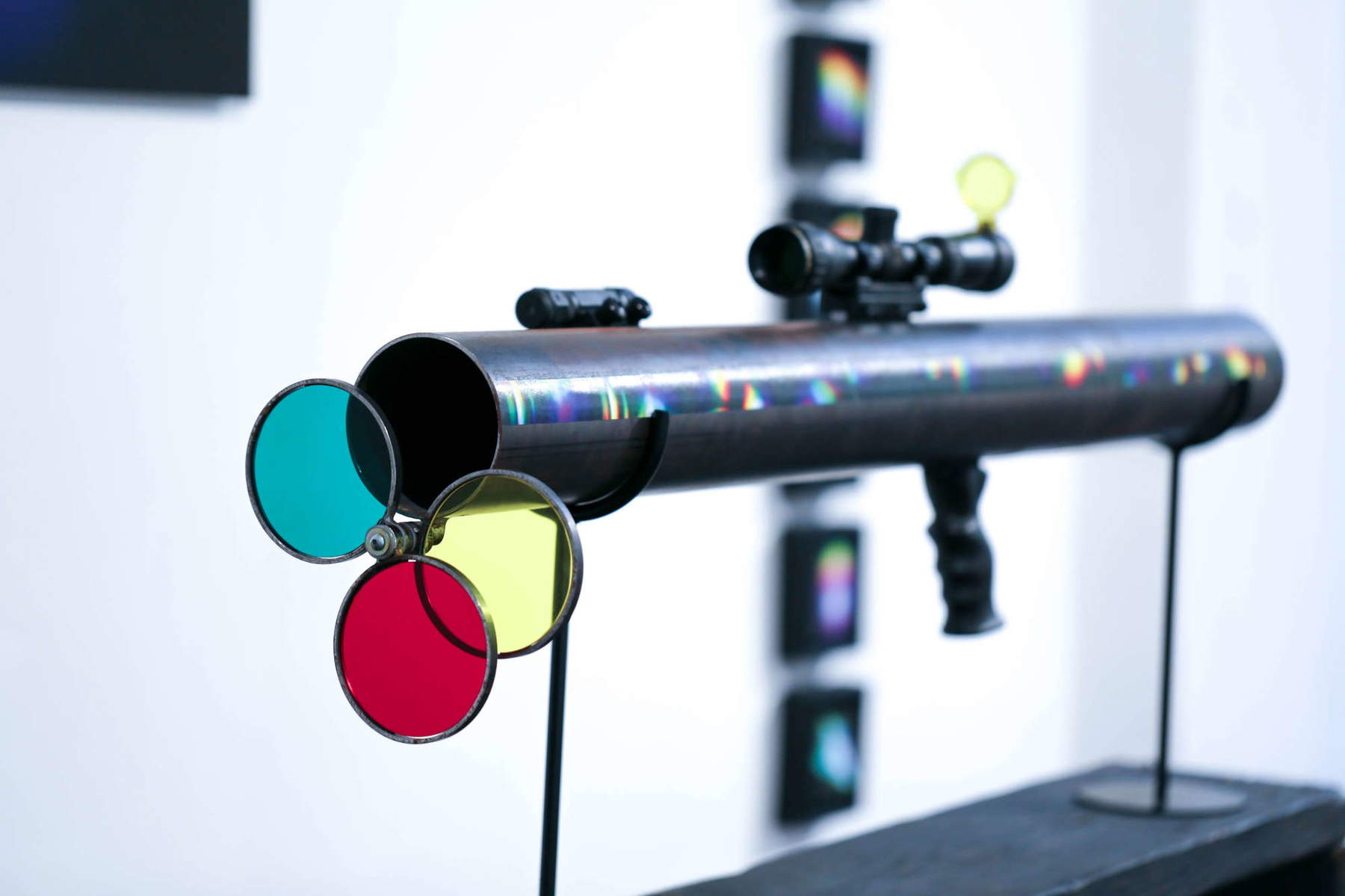
His sculptures have also been described as elevators of consciousness. In any case, to activate this energetic resonance between work and viewer, what kind of exchange should there be, precisely, between the sculpture and the viewer?
The exchange between the audience and the sculpture itself (or the tool) becomes an invisible interactivity: in fact, I have been working with these spikes that create a middle space, which according to Eastern and Buddhist philosophies is the balancing space between opposites. I have always been fascinated about anything that works on this balancing point. There are no extremes. This balancing point is essential: in the morning, I go through three tools -- the first is balancing opposites, the second is harmony and connection by activating the magnetism of the heart and the electricity of the brain in finding a point that becomes intention and intuition, and then I get to the third phase, the Power Connection phase, where the points are transformed, we are outwardly interactive and connected with all possible and imaginable information.
You are convinced that art can transform the world. What does that mean and how does it do it?
Art has the power to transform the world but it is not something that starts with me, it has always been that way. It comes about precisely as a liberation of the human being to bear witness to the historical moment he or she has lived through, and it has always been that moment of cultural transition always ahead of all other political, scientific, cultural situations of the time. I don’t think of myself as an artist (for me already the classification of a human being, that is, when they are told “you are an artist,” “you are a designer,” “you are a human being,” is just and exclusively a box that society puts us on, for me there is no separation), but a creative, a free spirit. Creativity is not born for selfish purposes, but is born from the essence, and that is why I want to share this transformative spirit in the search for self. For me, these tools, or sculptures as you want to call them, are a means of finding oneself, interacting with other human beings, being more centered.
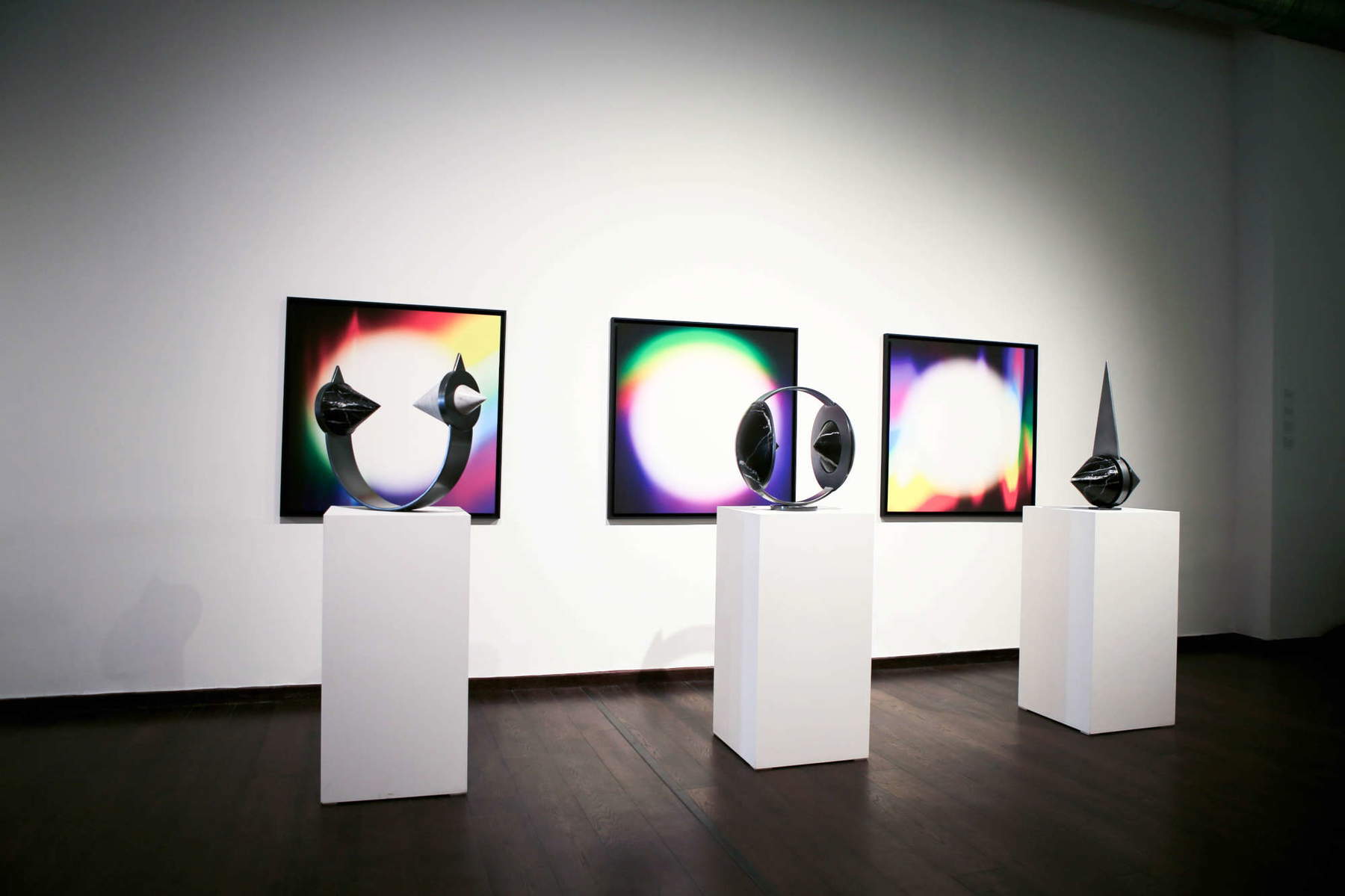
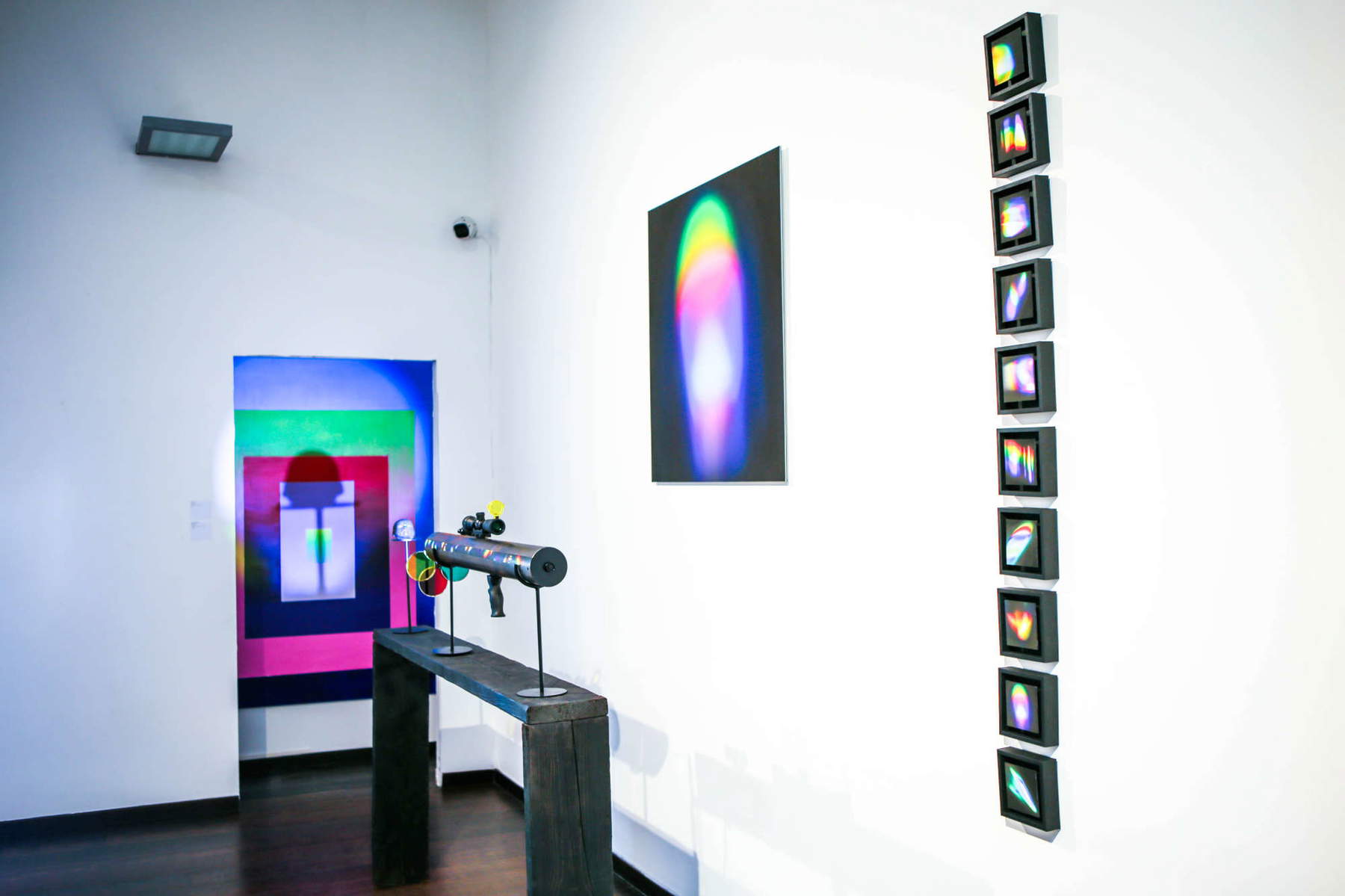
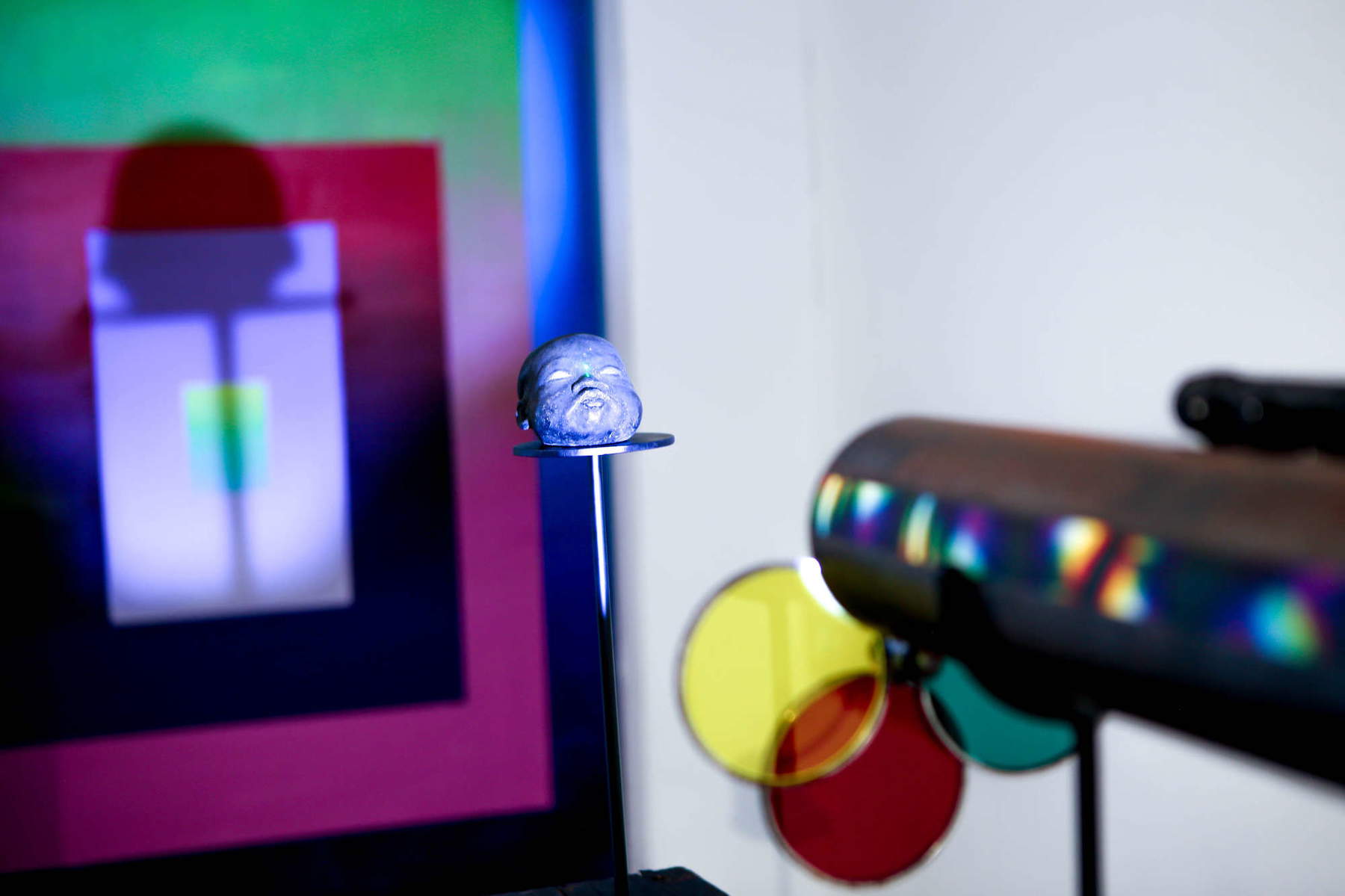
Your works denote an interest in science. Where does it come from?
My interest in science, particularly quantum physics, has always been there. I have always studied quantum physics and the relationships between particles. I have always been fascinated by new scientific discoveries: for me they are a source of inspiration and the start of any project of mine. For me a scientific reading opens a horizon: I imagine tools, sculptures, objects, a photo. It also makes me alive and justifies what I do, and giving a bit of soul to scientific discovery. For example, reading Dirac for the first time, I was fascinated by Dirac’sentanglement , two particles coming into contact even though one of them is on the other side of the world, with one movement still affecting the other: and I find it fascinating because we are energy and we communicate with each other.
Your works are made of steel and marble. Why did you choose these materials?
The three sculptures are in marble and steel as they were inspired by the fundamental material of the place. Pietrasanta is an art place that expresses marble everywhere, so marble after a while starts to become part of your inspirational family. Steel provides support and timeless texture.
Is there any particular inspiration that can be found in these works?
Today we live in a connected world. We are connected both through digitization and physically when we interact with everything around us, with a world that storms us with information. It is normal that when we then create, each of us is like my creation is small part of the creations of others. And so to the question I probably get inspired daily by everything around me and all the artists at the same time just by the law of connection: we are all one big picture, we are all one big imaginary.
Warning: the translation into English of the original Italian article was created using automatic tools. We undertake to review all articles, but we do not guarantee the total absence of inaccuracies in the translation due to the program. You can find the original by clicking on the ITA button. If you find any mistake,please contact us.